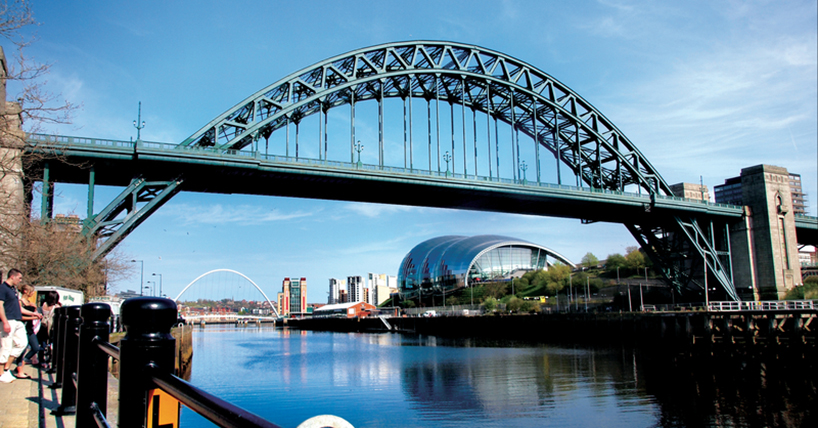North hit harder by Spanish flu and Covid
North hit harder by both Covid-19 and Spanish flu pandemic
Published on: 7 December 2020
Northern England, which was worst hit by the first wave of coronavirus, also suffered more than the South during the Spanish flu outbreak more than 100 years ago, according to new research.
A recent study by the Northern Health Sciences Alliance (NHSA) found the Northern Powerhouse area suffered over 12 more Covid-19 related deaths per 100,000 than the rest of England.
Now one of the authors of that research has analysed the 1918 Spanish flu outbreak, which killed 50-100 million people globally, for any health inequalities.
Clare Bambra, professor of public health at Newcastle University, teamed up with other academics – including Dr Paul Norman from Leeds University – to study similarities in how the two quite different pandemics affected England’s regions.
She told the PA news agency: “We looked at data from the 1918 Spanish flu pandemic and mapped it to see what happened in different local areas at that time.
“We found that, similar to today with Covid, there was much higher mortality from Spanish flu in the northern areas of England, and the Midlands.
“The lowest rates were in places like Surrey – around 200 deaths per 100,000 in 1918 – and the highest rates were up in places like Hebburn and Jarrow in the North East, where it was almost 1,200 deaths per 100,000.
“So six times as high.”
The data was sourced from the 1920 report into the Spanish flu pandemic’s mortality rate compiled by the Registrar General – the equivalent of today’s head of the Office for National Statistics.
Writing at the time, Sir Bernard Mallet said: “The northern parts of the country suffered decidedly more, on the whole, than the southern.”
Prof Bambra said the same was true a century later, despite the creation of the welfare state and the NHS in the intervening time.
She said: “Covid rates are much lower across the whole of the country, thankfully, than the pandemic flu rates 100 years ago but we still find big differences.
“For example, in the NHSA report, we found that mortality in the first wave of Covid was around 12 deaths per 100,000 higher in the Northern Powerhouse than in the rest of England.”
Prof Bambra, who has written a paper published in the journal Environment And Planning A: Economy And Space, said it was too early to directly compare the towns worst affected by Spanish flu and the areas most hit by Covid.
But she said it was clear that Northern regions did worse in the 1918 outbreak and were doing worse in 2020 with Covid.
She said: “The degree of inequality is smaller today, but the background factors are still the same.
“It has to do with social and economic inequality.
“Inequality in people’s working conditions, in their standards of living, in people’s nutrition and in the underlying risk factors, such as diabetes or Chronic Obstructive Pulmonary Disease.”
The public health expert said this was not inevitable.
“I don’t think it needs to be accepted,” she said.
“There is evidence from other countries that you can really close regional inequalities in health.
“So for example, East and West Germany had a four year gap in life expectancy at the fall of the Berlin Wall.
“Today there is no gap in life expectancy between these two parts of the country.
“The differences are now such that women in the North East or North West of England have a lower life expectancy than women in the east of Germany.
“So if they can do it there, under much harder circumstances, there is no reason why we cannot level up here.”

Reaction to the research
Commenting on the research, Jamie Driscoll, Labour’s North of Tyne elected mayor, said: “There’s a direct link between economic security and health. It’s been proven time and again.
“Most recently the Marmot report showed the North East has sections where life expectancy is falling. Healthy life expectancy is much lower than other parts of Britain.
“In the past we might have said it’s the nature of the work – the link between mining and lung disease, for example. But the plain and simple fact it’s because of poverty and insecure work.”
A Government spokesperson said: “We remain determined to level up on health outcomes as well as opportunity, with our £30 billion Plan for Jobs helping create, protect and support across the UK.
“We have also committed £170 million to help families stay warm and well fed this winter while our Universal Credit increase has resulted in millions of people receiving more money than previously.
“Throughout the pandemic we have worked hand-in-hand with local authorities and over £300m has already been allocated to local authorities in England to help them stop the spread of the virus in their communities.”
Reference: Visualising regional inequalities in the 1918 Spanish flu pandemic in England and Wales. Clare Bambra, Paul Norman, Niall Philip Alan Sean Johnson. Environment And Planning A: Economy And Space
The NHSA report is available online.
Courtesy of and with thanks to Tom Wilkinson at PA media.

Latest News
Heading 3 example
Text only. For subheading use ‘Heading 3’
Lorem ipsum dolor sit amet, consectetur adipiscing elit. Donec vel sapien lectus. Aliquam consectetur vitae tortor mattis sodales. Donec id quam id nulla tristique vestibulum. Ut vitae orci aliquam massa varius dapibus. Vivamus aliquet, lorem sit amet semper ultricies, ex tortor molestie felis, at ultrices tellus ligula vitae est. Sed gravida tortor sapien, in iaculis quam vestibulum vel. Duis et quam nec metus pharetra placerat. Donec in tellus pretium ex sagittis posuere. Nunc varius, libero at suscipit commodo, magna lacus facilisis velit, sed pellentesque magna eros vel dolor. Donec pretium neque ultrices, condimentum turpis non, porttitor neque. Suspendisse fermentum at lectus scelerisque mattis. Nam augue justo, iaculis quis euismod et, viverra in elit. Aliquam vitae justo malesuada, sodales urna et, aliquam nunc. Nulla placerat neque quis odio molestie, mattis bibendum turpis pellentesque.



